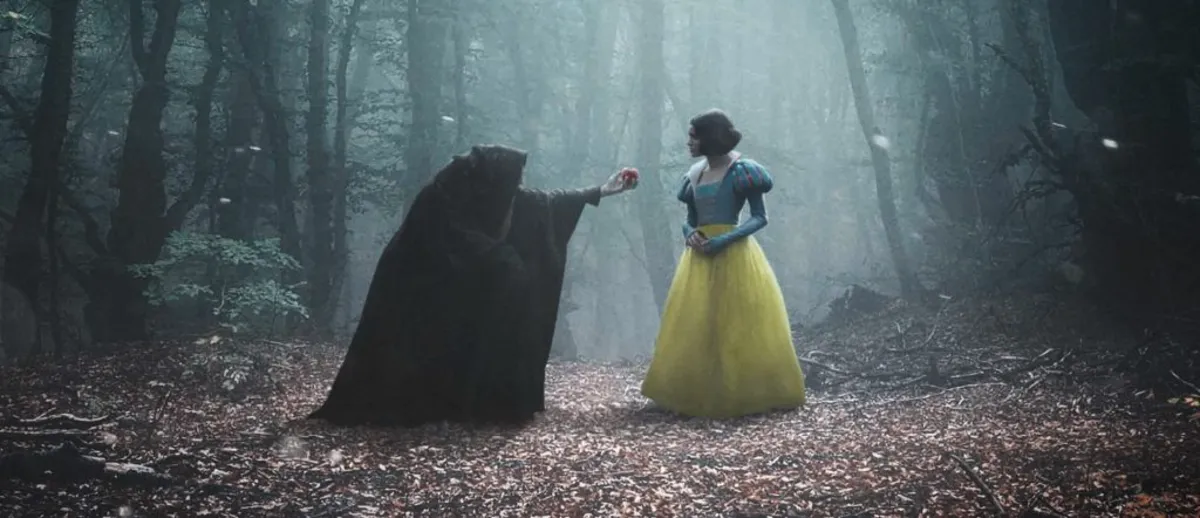
As we head into the weekend, Disney's latest adaptation, Snow White, has sparked significant online discussion, earning the nickname "Snow Woke" in various circles. This has raised questions about how the film will perform at the box office in a deeply divided country, especially in the context of the ongoing political divide between blue and red states. The live-action version, featuring Rachel Zegler and Gal Gadot, opened to a disappointing $43 million domestically against a staggering production budget of $270 million (excluding marketing costs).
According to box office analytics from EntTelligence, Snow White generated 60% of its ticket sales and attracted 56.5% of its total attendance—equating to 3.1 million admissions—from theaters located in blue counties. This statistic comes with an important note, as it reflects the geographical distribution of theaters across the U.S., with 53% of theaters situated in blue areas, which account for approximately 66.78% of overall movie ticket sales and 63.58% of cinema attendance. Major urban markets like Los Angeles, New York City, and Chicago are among the top grossing regions for box office revenue.
Interestingly, family and animated films typically see their ticket sales coming from 63% blue counties and 37% red counties, while attendance is drawn from 60% blue counties and 40% red counties. This means that Snow White performed notably well in red county cinemas, achieving 40% of its ticket sales and 43.5% of admissions from these areas.
Further analysis reveals that Snow White overperformed in Latino and Hispanic markets, particularly in cities like Dallas, San Antonio, and Phoenix. The film attracted a substantial 30% of its audience from Latino and Hispanic demographics, compared to 43% from Caucasian viewers. This statistic is particularly noteworthy given the controversy surrounding Zegler's casting and her vocal stance against online trolls, famously stating, “yes, I am Snow White; no, I am not bleaching my skin for the role.”
In a politically charged environment, Zegler's comments following the recent presidential election, where she expressed her disdain for the newly elected president, drew criticism from figures like Megyn Kelly, who labeled Zegler's behavior as concerning. Despite the backlash, the film's marketing strategy aimed at showcasing diversity in its casting.
According to Screen Engine/Comscore's PostTrak data, 21% of the audience bought tickets to Snow White because of Zegler and Gadot, in contrast to 34% who purchased tickets to Wicked, which features stars Ariana Grande and Cynthia Erivo. Despite Disney's commitment to diversity, the film was released during a period when many corporations, including Disney, are reconsidering their DEI (Diversity, Equity, and Inclusion) initiatives due to the current political climate. FCC Chairman Brendan Carr recently indicated that corporate mergers could face governmental scrutiny based on their DEI policies.
EntTelligence's Chief Strategy Officer, Steve Buck, noted that there was no "red theater blockade" affecting Snow White due to its perceived controversies. In fact, theaters in red counties performed better than expected for a family or animated film of this magnitude. While the controversies surrounding Zegler and the film’s dwarves undoubtedly had an impact, it’s crucial to recognize that the overall box office performance may also stem from a dwindling interest in older Disney intellectual properties.
Additionally, demographic data shows that only 28% of the film's audience was under 13 years old, contrasting sharply with other successful films like Barbie, which attracted 14% of its audience from this age group during its opening weekend.
Despite the challenges faced at the box office, sources from the industry indicate that Snow White played evenly across the nation, with its highest-grossing location being the AMC Disney Springs in Lake Buena Vista, FL, which earned $135,000 by yesterday. While it remains uncertain whether the film will recover its investment, there is potential for a boost from family audiences and young girls during the upcoming spring break season.